Airbus Defence and Space have signed a contract with French DGA Armament general directorate to provide the French Navy with 11 systems, (22 aircraft), of the electrically powered fixed-wing Aliaca maritime version UAS, including training and integrated logistic support.
First deliveries are expected in 2021.
“We are honored to contribute to the missions of the French Navy which we will support with the highest standards of quality and reliability. This new contract strengthens SURVEY Copter’s position as a global key player for maritime mini UAS”, said Nicolas Askamp, Head of Survey Copter / Airbus Unmanned Aerial Systems.
The builders say that the Aliaca maritime UAS is a high endurance versatile system allowing up to 3 hours missions over a 50 km (27 Nm) range, “perfectly adapted to maritime missions with high gyro stabilized EO/IR payload performances and qualified to operate in severe environmental conditions. Launched by catapult, the Aliaca maritime UAS concludes its flight by landing automatically using a dedicated net landing solution”.
With a length of 2,2m and a wingspan of 3,6m for a maximum take-off weight of 16 kg, the Aliaca maritime UAS benefits from a powerful yet silent electric motor, say Airbus.
“It is designed to conduct several types of missions around the ships, including increasing the understanding of the tactical situation, control of illegal operations at sea, search-and-rescue, traffic monitoring, pollution detection, tracking of any suspicious behaviour in the ship environment and coastal surveillance.
This light on-board aerial solution gives the opportunity to vessels, traditionally not equipped with aerial assets, to enhance their tactical ISR capabilities, support decision making and reactivity in operations.
The Aliaca maritime UAS can easily be integrated on board any ships, with or without helicopter landing-deck, and its small logistic footprint enables operations and storage on board smaller sized ships. Its integration does not require heavy on-board modification nor storage of specific fuel.”


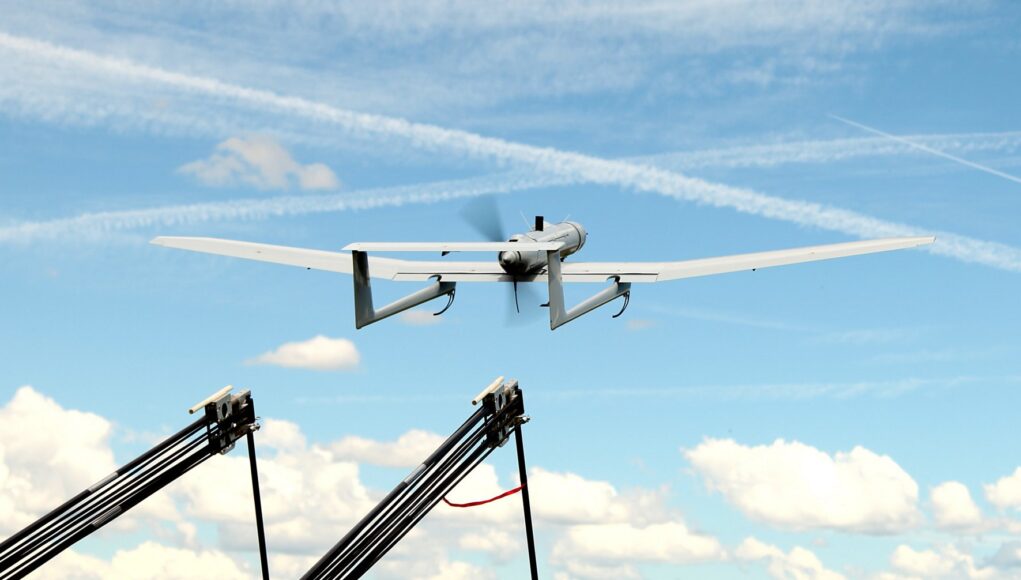
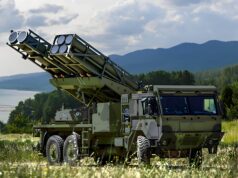

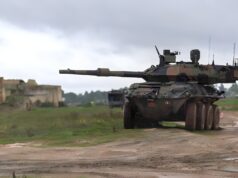
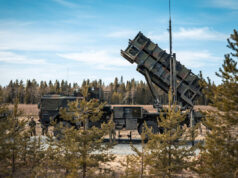
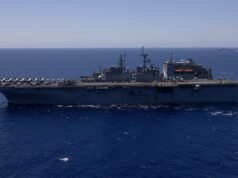
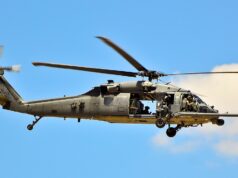
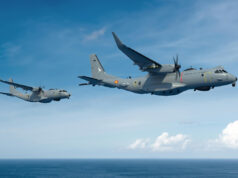
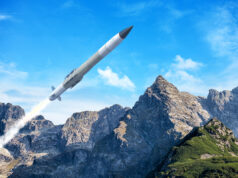

I wonder would this drone be a option for the Royal Navy ,for the River class and smaller ships . They would probably need something bigger and more powerful to provide ARE and ASW.
Looks somewhat similar to the ScanEagle drone that the RN was trialing a few years ago with a similar catapult launch and I assume both share a catching wire retrieval mechanism (or maybe a net but I’m pretty sure ScanEagle used a catching wire). I think funding for that RN trial was not renewed which was what stopped the trial rather than it reaching a buy/don’t-buy conclusion but I might be wrong on that.
Personally I’d rather see something like Schiebel S-100 for the River B2s. The 3.6m wingspan on this french drone makes it a bit awkward for a container where ideally I would want any embarked drone to be able to be hosted in a standard 20′ container with enough space to allow the container to essentially be a full hanger for the drone where full maintenance could be performed inside it. With the S-100 only having a width of 1.24m and a length of 3.11m there is space to do that, just – you’d probably have to only be working on the drone from one side at a time since centring it in the “hangar” would leave less than 60cm clearance each side. Also the S-100 is in a whole different league re payload and endurance, about 30kg with 6 hour endurance I think which is enough for a pretty decent sensor package. Plus simple VTOL is I assume a lot less fuss than particularly a catching wire or net for retrieval and no catapult for launching is one less component to deploy and store away again.
Now ideally I’d like to see UK industry come up with a next generation rotary wing drone to better the S-100 with somewhat better payload/endurance capability but still in the 200kg – 300kg weight category. I think a really good product in that sort of weight category could have fantastic export potential as well as the capability enhancement it could offer to RN vessels such as the Rivers and Bays.
Indeed….and I would have thought it would be highly advantageous to T31 / T32 or other larger ships operating remotely . Would probably pay for itself in reduced fuel and maintenance costs for wildcat or Merlin doing basic reconn.
look similar to the blackjacks used by the USMC
I think they are retiring, perhaps the UK should buy all of these from them.
USMC selected Hero 120 loitering munition.for their LUSV and also landing vehicles
Very interesting news.
1: Yet another evidence that helicopter-like UAV has some “shortfall”.
2: Different from ScanEagle, Aliaca is electrically driven. The Puma small UAV adopted by RN also uses electric drive. Surely, the new trend.
3: The Aliaca system use “an efficient net recovery system, fully automated, meaning that no human action is required during the recovery phase”. Are the any image of it? (https://www.airbus.com/newsroom/press-releases/en/2021/02/french-ministry-for-armed-forces-selects-airbus-survey-copter-aliaca-fixedwing-drone-systems-to-equip-its-ships.html)
You can see more here:
https://youtu.be/wNierVRI92Q?t=76
Thanks! Looks like safer than the ScanEagle’s case.
The scan eagle footprint was massive. Almost as large as a Lynx/Wildcat. Spare wings and bodies and the enormous catapult and handling cart and then the catcher system didn’t help along with finding 3 berths for the Strawberries operating it… You could fill a 40ft container with all of the kit.
It was nice when the RN had it, it gave them options and experience with using UAVs.
If you want a decent payload carrier though for Asw you will need a big drone, considerably bigger than Scan eagle and in all likely hood a Helo based one.
I will happily admit to ignorance in this area. Are systems like this with such limited range and payload any real use at sea? I get that they can be useful in land warfare to pinpoint concealed enemy forces. But at sea what do they provide that a good telescope can’t? Can they operate in rough weather?
Birds eye view. Dont forget the horizon is about 5km at sea level or about 20km from a mast, anything beyond this begins to be obscured by the curvature of the Earth.
Cabin boy from the Crowsnest? The pace of change nowadays is truly amazing. The downside is that new systems become obsolete so quickly. It seems we are rapidly heading from Science Fiction to Science Fact where humans in remote locations fight wars with robot like systems.
First half tedious with Ukraine’s packed defensive line but great second half!